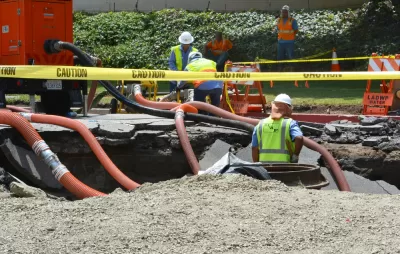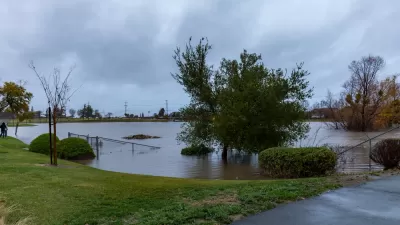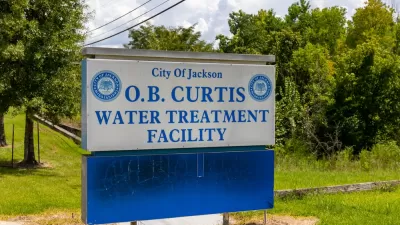California's historic drought might have been greatly relieved by last year's abundantly rainy season, but there are more drought years to come, along with more questions about how the state will manage its water resources.

Jay Lund, professor of Civil and Environmental Engineering at the University of California – Davis, and director of the UC Davis Center for Watershed Sciences, pens an op-ed for the California WaterBlog that lists eight of the most "dangerous" ideas in water management, specific to California's situation.
The list builds from a fundamental premise that water policy requires a broad consensus. In California, however, "people often seem to group themselves into communities of interests and ideology, which see complex water problems differently." Those groups each have their own, non-scientific ideas about water management, and Lund argues that such self interest can "ultimately become dangerous even to their advocates…"
Lund's eight "dangerous ideas" are as follows, with more detail in the article:
- There is a silver bullet solution.
- I win if you lose.
- We can "Solve or "fix" water problems.
- Someone else should pay.
- Regulation will protect the environment.
- We were promised.
- We need trust.
- It will work as planned.
An additional post for the On the Public Record blog piggybacked on Lund's list, adding a few of its own. Three additional items, in fact, include more detail in the source post:
- That conventional growth predictions are immutable and will pose new demand that we must meet.
- That water markets are a neutral, non-coercive way to reallocate water supplies.
- That California should grow all profitable foodstuffs.
FULL STORY: We hold our convenient truths to be self-evident – Dangerous ideas in California water

Alabama: Trump Terminates Settlements for Black Communities Harmed By Raw Sewage
Trump deemed the landmark civil rights agreement “illegal DEI and environmental justice policy.”

Study: Maui’s Plan to Convert Vacation Rentals to Long-Term Housing Could Cause Nearly $1 Billion Economic Loss
The plan would reduce visitor accommodation by 25% resulting in 1,900 jobs lost.

Why Should We Subsidize Public Transportation?
Many public transit agencies face financial stress due to rising costs, declining fare revenue, and declining subsidies. Transit advocates must provide a strong business case for increasing public transit funding.

Paris Bike Boom Leads to Steep Drop in Air Pollution
The French city’s air quality has improved dramatically in the past 20 years, coinciding with a growth in cycling.

Why Housing Costs More to Build in California Than in Texas
Hard costs like labor and materials combined with ‘soft’ costs such as permitting make building in the San Francisco Bay Area almost three times as costly as in Texas cities.

San Diego County Sees a Rise in Urban Coyotes
San Diego County experiences a rise in urban coyotes, as sightings become prevalent throughout its urban neighbourhoods and surrounding areas.
Urban Design for Planners 1: Software Tools
This six-course series explores essential urban design concepts using open source software and equips planners with the tools they need to participate fully in the urban design process.
Planning for Universal Design
Learn the tools for implementing Universal Design in planning regulations.
Smith Gee Studio
Alamo Area Metropolitan Planning Organization
City of Santa Clarita
Institute for Housing and Urban Development Studies (IHS)
City of Grandview
Harvard GSD Executive Education
Toledo-Lucas County Plan Commissions
Salt Lake City
NYU Wagner Graduate School of Public Service





























